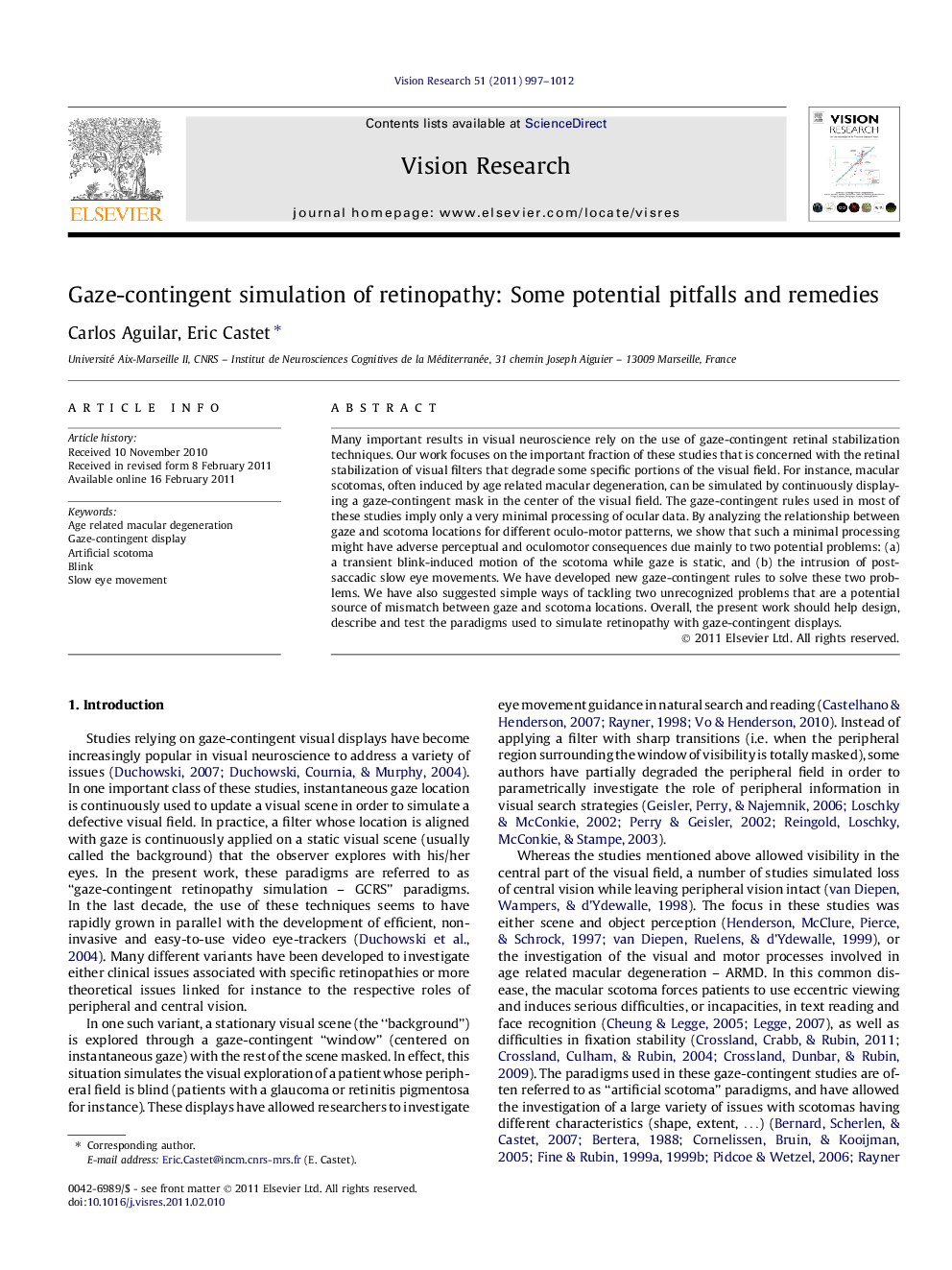| Article ID | Journal | Published Year | Pages | File Type |
|---|---|---|---|---|
| 6203771 | Vision Research | 2011 | 16 Pages |
Many important results in visual neuroscience rely on the use of gaze-contingent retinal stabilization techniques. Our work focuses on the important fraction of these studies that is concerned with the retinal stabilization of visual filters that degrade some specific portions of the visual field. For instance, macular scotomas, often induced by age related macular degeneration, can be simulated by continuously displaying a gaze-contingent mask in the center of the visual field. The gaze-contingent rules used in most of these studies imply only a very minimal processing of ocular data. By analyzing the relationship between gaze and scotoma locations for different oculo-motor patterns, we show that such a minimal processing might have adverse perceptual and oculomotor consequences due mainly to two potential problems: (a) a transient blink-induced motion of the scotoma while gaze is static, and (b) the intrusion of post-saccadic slow eye movements. We have developed new gaze-contingent rules to solve these two problems. We have also suggested simple ways of tackling two unrecognized problems that are a potential source of mismatch between gaze and scotoma locations. Overall, the present work should help design, describe and test the paradigms used to simulate retinopathy with gaze-contingent displays.
Research highlights⺠We describe two issues induced by gaze-contingent simulation of artificial scotomas. ⺠Blinks can induce large scotoma displacements when gaze is actually static. ⺠Undesired slow eye movements can be induced immediately after saccades. ⺠We describe new simulation methods to solve these problems.
